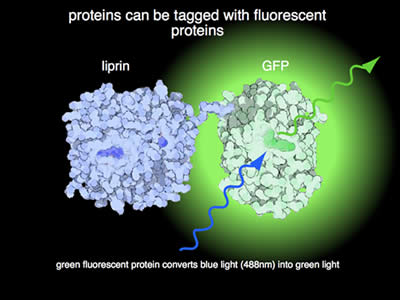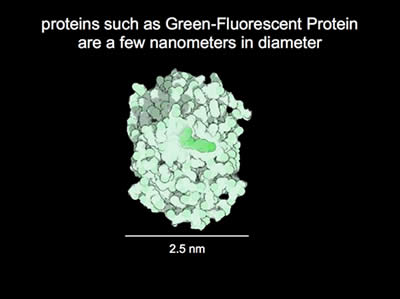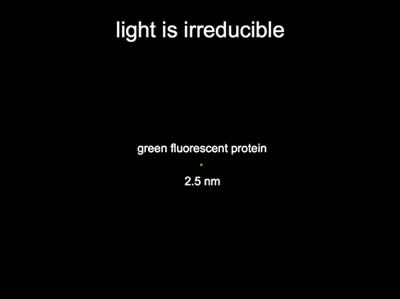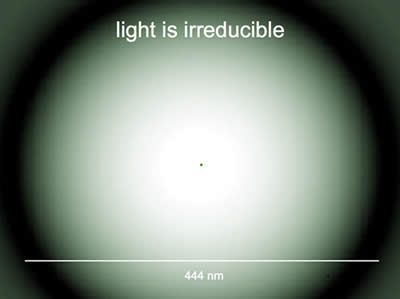Building a Scanning PALM Microscope
The Problem
Proteins can now be genetically tagged with fluorescent proteins and their locations in a cell determined using a fluorescence microscope.

Figure 1: The Green Fluorescent Protein can be attached to a target protein of choice, providing an optical label that be seen in a fluorescence microscope.
However, there is a barrier that limits the utility of fluorescence microscopy. The size of a protein is typically between 2-10 nanometers.

Figure 2:The structure and size of Green Fluorescent Protein
By contrast, light from a tag can only be focused to a spot of about 440 nanometers, this is known as the diffraction limit of light. Thus, there is a disparity between what we need to know about a protein and what we can learn from light microscopy.

Figure 3: Green Fluorescent Protein

Figure 4: The disparity between the actual size of Green Fluorescent Protein and the pattern it makes when viewed on a camera.

